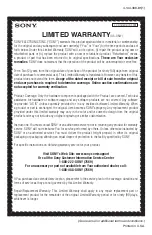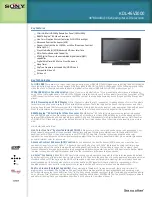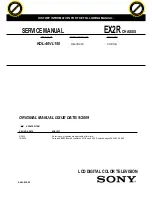
Chapter Three - Installation
49
System Power
Using isolation transformers on the incoming AC power line to the system is always
a good practice. An isolation transformer is especially desirable in cases in which
heavy equipment is likely to introduce noise onto the AC line. The isolation
transformer can also serve as a step-down transformer to reduce the incoming line
voltage to a desired level. The transformer should have a sufficient power rating
(units of volt-amperes) to supply the load adequately.
Proper grounding is essential to all safe electrical installations. Refer to the relevant
Federal, State/Provincial, and local electric codes which provides data such as the
size and types of conductors, color codes and connections necessary for safe
grounding of electrical components. The code specifies that a grounding path must
be permanent (no solder), continuous, and able to safely conduct the ground-fault
current in the system with minimal impedance (minimum wire required is 18 Awg, 1
mm).
Observe the following practices:
•
Separate ground wires (P.E. or Protective Earth) from power wires at the point of
entry to the enclosure. To minimize the ground wire length within the enclosure,
locate the ground reference point near the point of entry for the plant power supply.
•
All electrical racks or chassis and machine elements should be Earth Grounded in
installations where high levels of electrical noise can be expected. The rack/chassis
should be grounded with a ground rod or attached to nearby Earth structure such as a
steel support beam. Each different apparatus should be connected to a single Earth
Ground point in a “star” configuration with low impedance cable. Scrape away paint
and other nonconductive material from the area where a chassis makes contact with
the enclosure. In addition to the ground connection made through the mounting bolt
or stud, use a one-inch metal braid or size #8 AWG wire to connect between each
chassis and the enclosure at the mounting bolt or stud.
Excessive Heat
The units withstand temperatures from 0º to 50ºC. The systems are cooled by
convection, in which a vertical column of air is drawn in an upward direction over
the surface of its components. To keep the temperature in range, the cooling air at
the base of the system must not exceed 50°C. Allocate proper spacing between
internal components installed in the enclosure.
When the air temperature is higher than the specified maximum in the enclosure, use
a fan or air conditioner to lower the temperature.
Electrical Noise
Electrical noise is seldom responsible for damaging components, unless extremely
high energy or high voltage levels are present. However, noise can cause temporary
malfunctions that can result in hazardous machine operation in certain applications.
Noise may be present only at certain times, may appear as widely spread intervals, or
in some cases may exist continuously.
Noise commonly enters through input, output, and power supply lines and may also
be coupled through the capacitance between these lines and noise signal carrier lines.
Summary of Contents for 3510T
Page 2: ......
Page 4: ......
Page 7: ...Table of Contents 7 Mitsubishi TFT Flat panel Display Model AA121SK12 99 INDEX 103 ...
Page 8: ......
Page 16: ......
Page 37: ...Chapter Three Installation 37 Figure 3 15 Keypad Inserts with Dimensions PF1 PF20 ...
Page 92: ......
Page 106: ......
















































